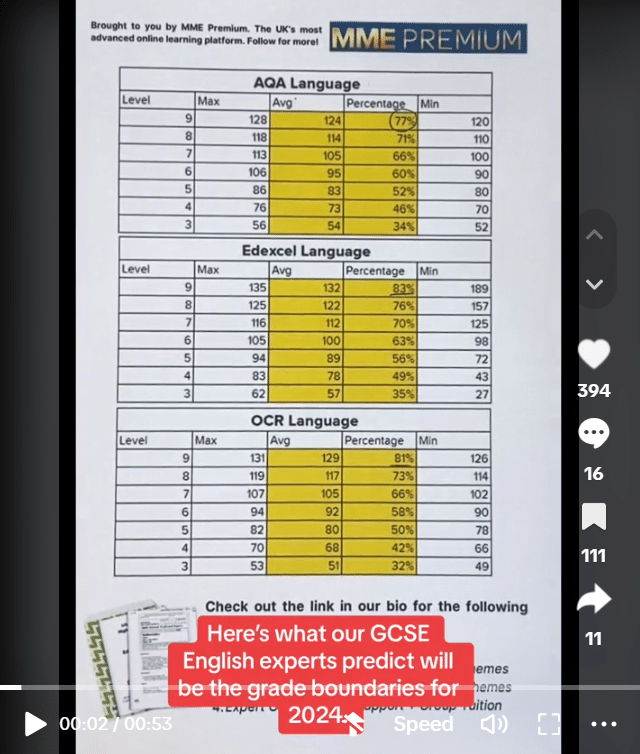Reading Non-Fiction: Meaning in Structure
Reading Non-Fiction: Meaning in Structure Revision
So, What is Structure?
Structure is how the text – including words, sentences and paragraphs – is physically put together.
Structure can be experimented with at every level of the text (in sentences, paragraphs and the text as a whole) and can have specific effects depending on how you use it.
Structure then is as important as language, it is how language is constructed, so without one there cannot be the other!
On this page we will take a deep dive into structure, covering perspective and narrative, sentence structure, paragraph structure, and how these contribute to the overall text.
Perspective and Narrative POV
What is a Perspective?
Perspective is the opinion the author has on the topic.
Identifying it is useful in the exam to show the examiner you can understand implicit bias in the text.
If the text has a neutral format like an informational article or essay, you could talk about how the author considers both sides of the story.
What is a Narrative?
Now that we know what a perspective is and how it can used in non-fiction, let’s examine how it can be portrayed.
Narrative point of view can be used to portray different perspectives.
Typically there are three: first, second and third person.
Let’s have a look in more detail…
First Person Perspective
First person perspective comes from the perspective of the author.
How do we recognise it?
First person pronouns are used: ‘I’, ‘me’, ‘ours’, and ‘myself’, ‘we’, ‘our’, ‘ourselves’, ‘my’, ‘mine’.
In non-fiction texts, they can be used to persuade the reader of a point by creating a conversational tone or immediacy.
It can give the reader information about a particular point of view, or a specific experience.
An autobiography is an example of this format, where the first person is dominant in the text. But more often than not, articles and letters will use first person pronouns too as the author’s opinion is given.
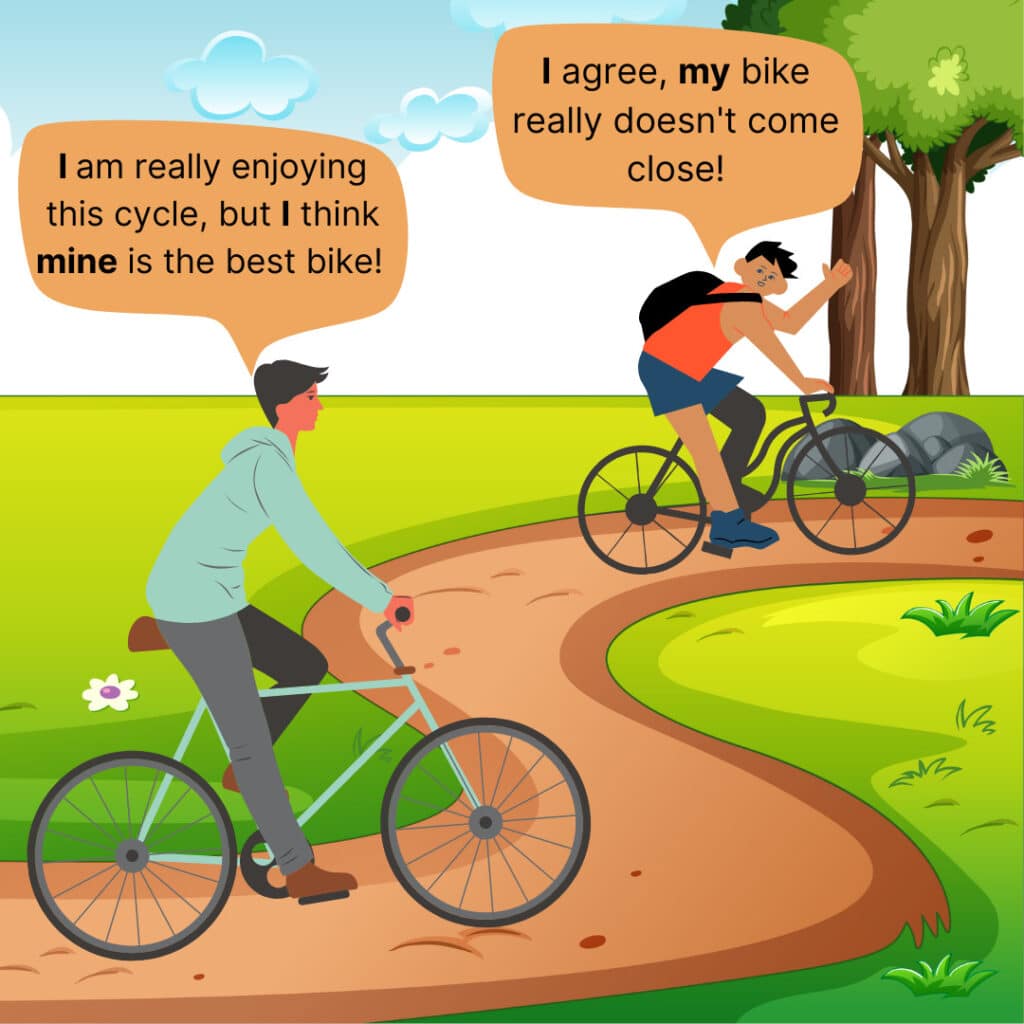
Examples
‘I am writing to express our desire for safer cycling paths in the town square’.
‘It was at that moment the hooded suspect snatched my phone out of my hand’.
‘There were two bags that belonged to me and my friend, but only mine was returned to me‘.
Second Person Perspective
This perspective is more common in non-fiction texts like recipes, instructions or adverts.
How do we recognise it?
The use of the pronouns ‘you’, ‘yours’, ‘your’, ‘yourself’, ‘yourselves’ refer to the reader.
Second person perspective centralises the object in the text, making it the focus for the reader rather than the subject.
Adverts and marketing make use of the second person perspective for example, as it is a powerful persuasive technique to make the reader feel as though the story or narrative involves them.
You might also find second person pronouns in reviews or speeches, as they are opinion-based formats.
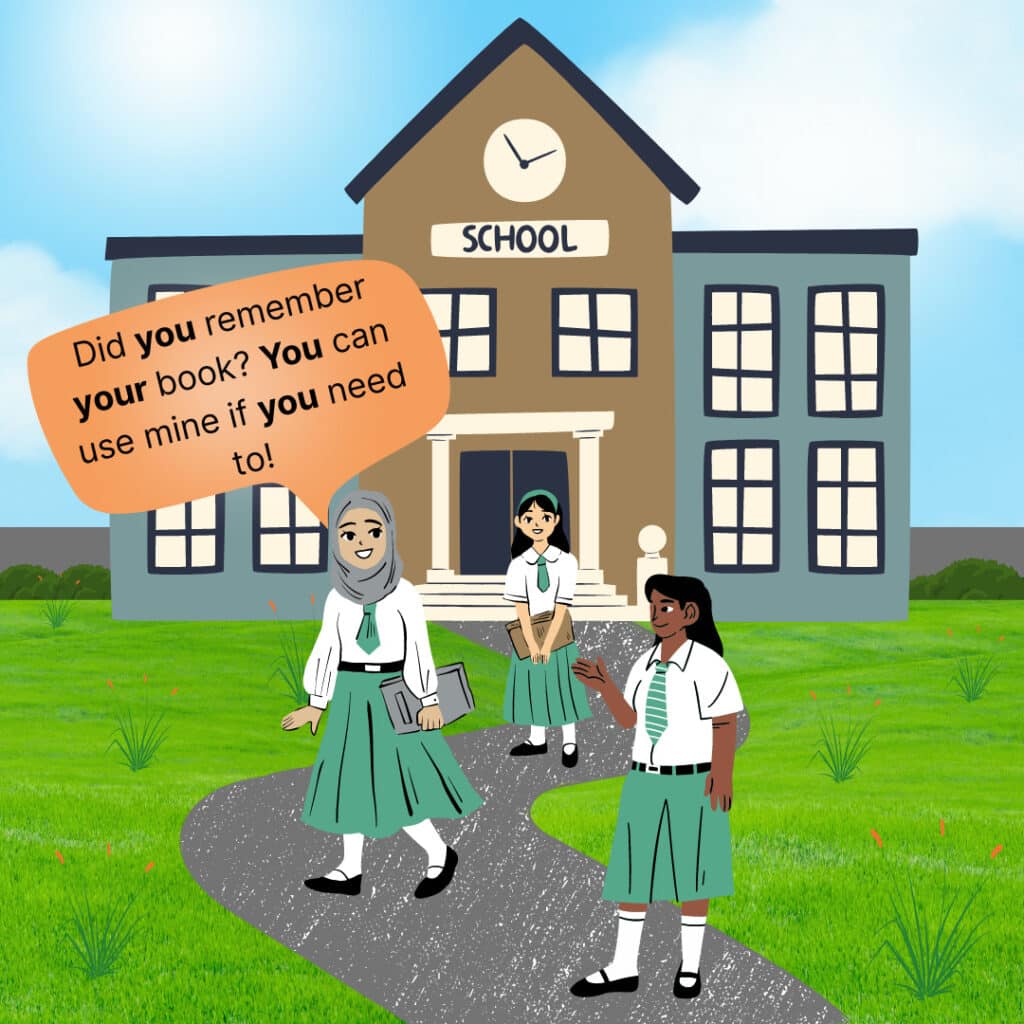
Examples
‘If you’re looking for the best wheelbarrows in town, you’ve come to the right place!’
‘After you finish that job you can leave for the rest of your evening’.
‘You should be well prepared for your field trip tomorrow, so pack your bag carefully’.
Mixing perspectives is not common in fiction, but in non-fiction texts, a mix of pronouns can help the text feel like more of a conversation between the author and the reader. For example, ‘I can’t believe you’ve done this’.
Third Person Perspective
This is when other people are referred to in the text as separate from the speaker.
How do we spot it?
It’s easy to spot through pronouns like ‘she’, ‘they’, ‘he’, ‘hers’, ‘their’, ‘him’, ‘her’, ‘his’, ‘herself’, ‘it’, ‘it’s’, ‘itself’, ‘they’, ‘them’, ‘themselves’.
In non-fiction texts, you would find this perspective in an article or journal as it gives a more objective tone and helps the reader to trust the author by removing the self, or personal opinions from the text.
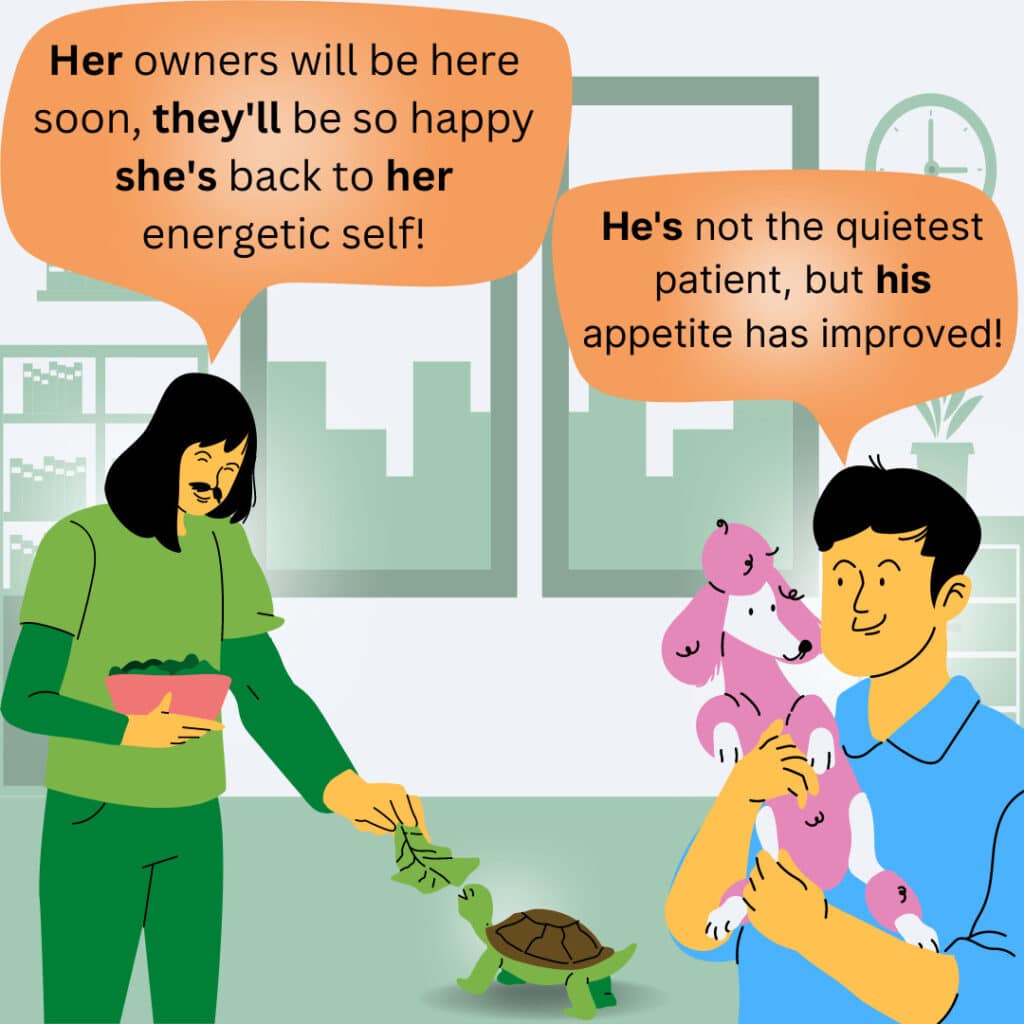
Examples
‘She entered the vet’s office with her dog and waited to be seen’.
‘The crowd surged forward as they realised the band were starting’.
‘He gave up almost instantly, shaking his head as he walked away’.
‘They reached into their bag to get their purse ready for security to check’.
Structure: Sentence Level
Structuring at sentence level essentially comes down to how much detail the author wants to include and why.
The three sentence structures we are going to cover are simple, compound and complex.
Simple Sentences
Simple sentences can be used to convey facts, or create impact in the text.
They can be used to create a variety of effects, so it’s important to really analyse the language use in a short sentence.
The formula for this sentence is easy:
Independent clause only
An independent clause is a clause that can form a complete sentence standing alone.

Examples
- ‘The two friends took their kites down to the beach’
Simple sentences are most commonly used to convey information to the reader.
- ‘The door closed. Her heart sank. Maybe this was the end.’
Here, a dramatic tone is created and tension is built through deliberate repetition of short sentences.
- ‘The rate of homelessness in the UK is higher than ever. We must do something about this!’
Short sentences can also be used to persuade, mimicking short exclamations to draw attention to the point being made in the text.
Compound sentences
Clauses of a similar idea or thought can be joined to make your writing flow better.
They are joined by a conjunction like ‘and’, ‘but’, ‘so’.
This helps you to avoid having to use lots of short sentences, which can lead to your answer sounding too simple. Varying your sentence lengths will hold the readers interest for longer.
The formula for this sentence is a little longer:
Independent clause + conjunction + independent clause
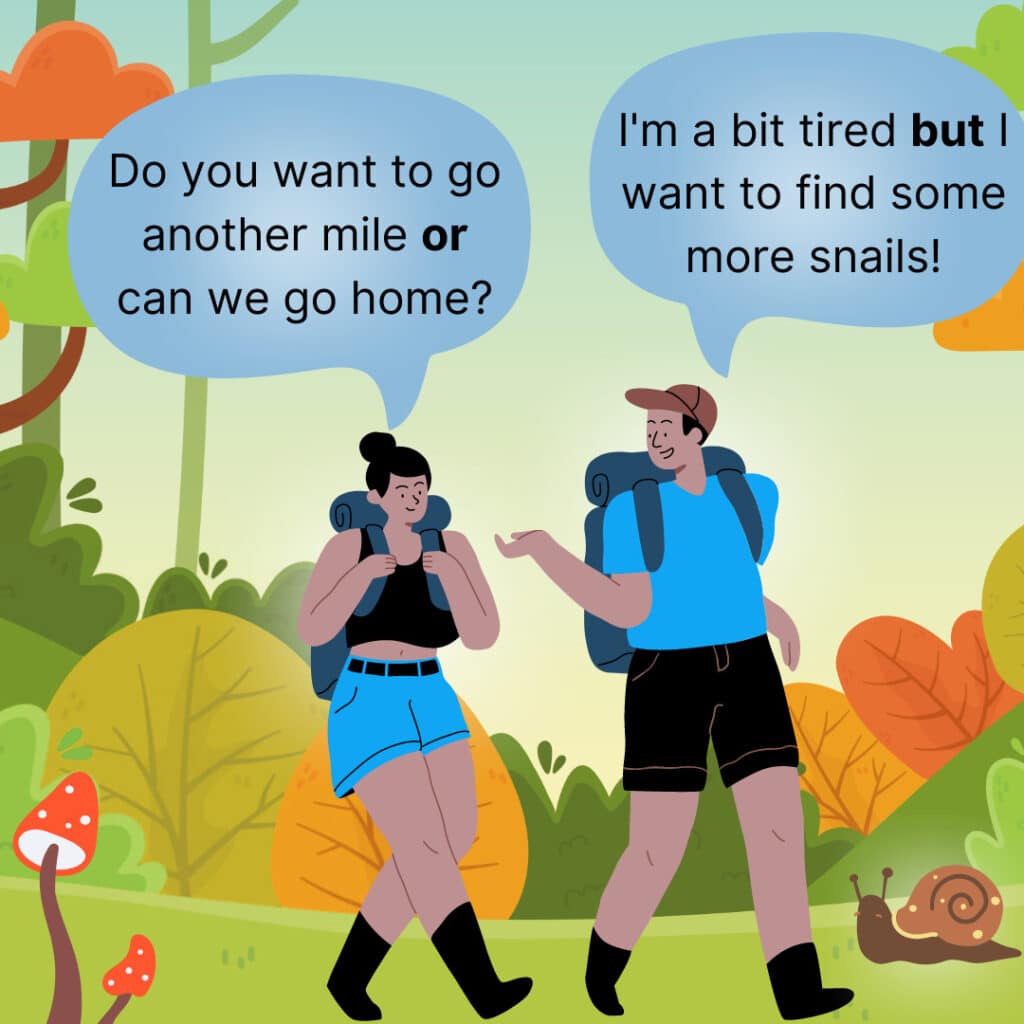
Examples
- ‘We had to take them home but we stopped for ice cream first’.
- ‘The container was too big, so the soup got cold quickly’.
- ‘The bell rang and the birds flew away in a hurry’.
Complex Sentences
A complex sentence is the combination of an independent and subordinate clause. They can be used to add clarification or modify the original, independent clause.
There can be different formulas for complex sentences as you can switch up the order of the clauses, it’s fun to play around and see which you prefer!
Formula:
Independent clause + connective + subordinate clause
Subordinate clause + connective + independent clause
Some complex sentences can avoid using a connective altogether and instead use a comma.
Examples
- ‘Because I was the fastest person, I won the race.’
- ‘Whenever I get on the train, I buy a new book to read on the way.’
In both these examples above, the subordinate clause comes before the main clause.
A subordinate clause is one that cannot stand alone, it doesn’t make sense without an independent clause supporting it.
A comma can be used in this case rather than a connective.
- ‘I enjoyed working in the library, although my ears became more sensitive to noise’
In this example the subordinate clause comes after the independent clause.
- ‘The suspect, wearing brown trousers and a red top, was last spotted on Tuesday’
Here, the subordinate clause is embedded within the independent clause using commas.
Structure: Paragraphs
In your answers and within the writing of others, you may be familiar with the PEEL method.
The acronym stands for Point, Evidence, Explanation and Link.
This follows the basic paragraph structure that is widely used in non-fiction texts.
Let’s break the structure down some more!
PEEL
Point
A topic sentence is where the argument or point the author is planning to make in the rest of the text is summarised briefly, along with how they plan to make their point.
This is the P of the PEEL structure!
It is important to be able to recognise the main point in different texts.
For example, if you are asked to summarise the opinion of Source A, you might look at the topic sentences of each paragraph to get a general idea of their argument.
Evidence
After the overall point has been given, you can use evidence from the text to strengthen your idea.
This is the E of the PEEL structure!
Think of this like a lawyer’s argument, showing the jury specific pieces of evidence to prove their point.
In your answer this would be quotes from the text, usually short and concise.
Explanation
Once the evidence has been included, you will need to expand on the effect with a detailed explanation of how it impacts the argument.
This is the other E of the PEEL structure!
This can include an analysis of the language used and even structural features.
In non-fiction texts, it could be how the writer has used a complex sentence to add detail, or the use of formal language.
Link
Lastly, you will need to link your answer back to the question to show the examiner you understand what it is asking you.
This is the L of the PEEL structure!
This could include different points and methods addressed, and perhaps open up a new idea for the next paragraph.
In non-fiction texts, it is important to track the author’s points throughout and see where the argument ends up, in order to get a good idea of their aims or perspectives.
Structure: Whole Text
In the reading exam you will be given more than one source to read through.
Noticing language features in a text requires a fine-tooth comb, but for a whole text analysis, imagine you are casting a fishing net.
You are looking at the beginning, middle and end of the text and analysing how the argument develops throughout.
Is the text set up as a contrast between two points? Is there a tonal shift in the text you can see across the paragraphs?
You can still use your knowledge of sentence and paragraph structure when analysing the entire piece. For example, does the text start with short sentences and develop into complex sentences?
Is it a detailed article with no variety to convey a logical tone?
Example Paragraph
‘The town centre is in dire need of a boost.’
This is the point or topic sentence.
It can be short, particularly in a persuasive text for example, to catch the reader’s eye and engage them in the text by making them want to find out more.
‘Shops have been bordered up, footfall is down, and the economy is struggling as a result. That’s why I am running for local town councillor in the upcoming election. I will bring these issues to a wider sphere of discussion and aim to raise funds to bring a boost of life back to our high streets, helping local families get back on track. I will do this specifically by allowing new shops to open and encouraging restaurants to move in order to increase footfall.’
Compound and complex sentences are used to add more detail. Here, you can see that layering small structural techniques creates a well–constructed argument and smooth paragraph structure. Evidence and Explanation for his above point are given in this paragraph.
‘Now you have an idea of how I plan to help the town’s economy, let’s discuss the social aspects of town life we could improve.’
The concluding sentence summarises what has just been discussed, then links another subject that would become a new paragraph!

MME Premium Membership
£19.99
/monthLearn an entire GCSE course for maths, English and science on the most comprehensive online learning platform. With revision explainer videos & notes, practice questions, topic tests and full mock exams for each topic on every course, it’s easy to Learn and Revise with the MME Learning Portal.
Sign Up Now

